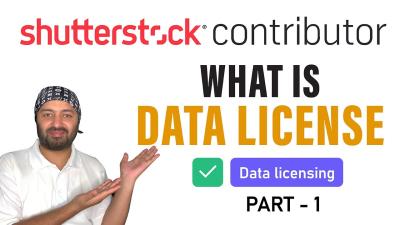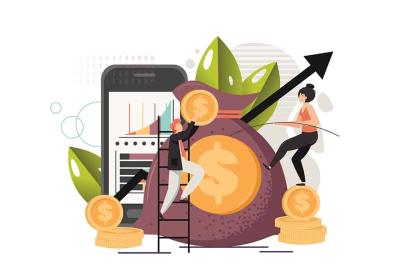If you’re into creating eye-catching designs, blogs, or social media posts, you’ve probably heard of Shutterstock—one of the biggest stock photo platforms out there. It offers a vast library of high-quality images that can really make your project stand out. But here’s the catch: when you browse Shutterstock, you often see watermarked images. These watermarks are those pesky overlays—like a semi-transparent logo or text—that protect the images from unauthorized use. They’re great for preview purposes, but if you want to use the images in your final project, you’ll need to get the official, watermark-free version. Understanding how these watermarks work and how to obtain images legally is key to making the most of
Legal Considerations for Using Shutterstock Images

Before diving into downloading images from Shutterstock, it’s super important to understand the legal side of things. Shutterstock’s images are protected by copyright, which means you can’t just download and use them freely—unless you have the proper license. When you purchase or subscribe to
Here’s what you need to keep in mind:
- Licensing Types: Shutterstock offers different licenses—Standard and Enhanced. The Standard license covers most typical uses like websites, blogs, and social media. The Enhanced license is for more extensive uses such as merchandise or large-scale prints.
- Usage Restrictions: Always check the license details. Some images have restrictions on how they can be used, especially in sensitive contexts or with identifiable people.
- Download and Use: When you buy an image, you’re granted the right to use it according to the license, but you do not own the image itself. Redistribution or resale of the image is generally prohibited.
- Watermarks and Unauthorized Use: Using watermarked images without proper licensing is illegal. The watermarks are there to prevent unauthorized use and serve as a reminder that you need to purchase the image legally.
In summary, always ensure you have the correct license before using any Shutterstock image. This not only keeps you on the right side of the law but also respects the work of photographers and creators who contribute to platforms like Shutterstock. If you’re ever unsure, it’s a good idea to consult
Methods to Download Shutterstock Images Without Watermarks

So, you’re eager to get high-quality Shutterstock images without those annoying watermarks? You’re in the right place! There are several legit ways to access watermark-free images, but it’s important to remember that respecting copyright laws and Shutterstock’s licensing policies is key. Let’s explore some common methods:
1. Purchase a Single Image License
The most straightforward and legal way to get images without watermarks is by buying a license directly from Shutterstock. When you select an image and pay for it, Shutterstock provides you with a high-resolution, watermark-free version. This method guarantees you’re on the right side of copyright law and supports the creators behind those images.
2. Use Shutterstock’s Download Options with a Subscription
If you plan to download multiple images regularly, consider subscribing to Shutterstock. Subscribers gain access to high-quality, watermark-free images as part of their plan. We’ll talk more about subscription options in the next section, but it’s a reliable way to get images without watermarks legally and efficiently.
3. Explore Free Stock Photo Websites
If you’re on a tight budget or just want to test out some ideas, free alternatives like Unsplash, Pexels, or Pixabay offer high-quality images that are free to use without watermarks. While these aren’t Shutterstock images, they can be great substitutes for many projects and are completely legal to download and use.
4. Use Image Editing Tools (Caution!)
Some folks try to remove watermarks using editing software like Photoshop or online tools. While technically possible, it’s important to understand that doing so without proper licensing is illegal and unethical. Watermarks are there to protect the rights of content creators. So, unless you have explicit permission or have purchased the image, avoid this method.
5. Avoid Unofficial Download Sites
Be wary of websites offering free or paid downloads of Shutterstock images without watermarks. Many of these sites operate illegally, and downloading from them can expose you to malware or copyright infringement issues. Always stick with legitimate sources to ensure you’re compliant and safe.
In summary, the best way to get Shutterstock images without watermarks is to purchase them legally or subscribe through Shutterstock’s official plans. This approach respects the rights of photographers and ensures you have access to high-quality, watermark-free images for your projects.
Using Shutterstock Subscription Plans and Licenses
Now, let’s talk about the most popular and practical method: subscribing to Shutterstock. If you’re someone who needs a steady stream of images, a subscription plan can be a game-changer. Not only does it give you access to unlimited high-quality images without watermarks, but it also offers flexible licensing options.
Understanding Shutterstock Subscription Options
Shutterstock offers a variety of plans tailored to different needs:
- On-Demand Packs: Purchase a set number of downloads upfront. Great if you only need images sporadically.
- Monthly Subscriptions: Fixed number of downloads per month, perfect for regular content creation.
- Annual Plans: Commit for a year and often get better rates per image.
How Licenses Work
When you subscribe, you’re purchasing a license that allows you to use the images legally. Shutterstock offers different license types:
| License Type | Usage Rights | Best For |
|---|---|---|
| Standard License | Use in digital or print media, up to a certain circulation or audience size. | Blog posts, social media, presentations, small print runs. |
| Enhanced License | Unlimited print runs, merchandise, or large-scale uses. | Commercial products, advertising campaigns, large events. |
Benefits of Using Shutterstock Subscriptions
Besides getting access to hundreds or thousands of images without watermarks, subscriptions offer:
- Cost Savings: Cheaper per image compared to individual purchases.
- Convenience: Download images directly from your dashboard anytime.
- High-Quality Files: Access to the latest, high-resolution images.
- Legal Security: Clear licensing ensures you’re compliant with copyright laws.
Things to Keep in Mind
While subscriptions are fantastic, make sure to choose a plan that matches your needs. Overestimating your monthly downloads could lead to unused credits, while underestimating might limit your creative options. Also, always check the license details for each image to ensure it fits your intended use.
In conclusion, leveraging Shutterstock’s subscription plans and licenses is the most efficient and legal way to access high-quality, watermark-free images. It not only saves you money but also gives you peace of mind knowing you’re using images ethically and legally in your projects.
Tips for Purchasing and Downloading High-Quality Images
Getting your hands on high-quality images from Shutterstock without watermarks is a great way to ensure your projects look professional and polished. But navigating the purchasing and downloading process can sometimes feel overwhelming. Don’t worry — I’ve got some handy tips to make it smooth and hassle-free!
First things first, choose the right license: Shutterstock offers different licensing options, primarily Standard and Enhanced licenses. Standard licenses are usually enough for most online uses, but if you need images for commercial purposes like merchandise or large print runs, consider the Enhanced license. Always double-check the license details to avoid any legal hiccups later.
Next, select the perfect image: Use Shutterstock’s search filters to narrow down your options. You can filter by orientation, color, size, and even people’s appearances. When you find an image you like, take your time to review the resolution, composition, and overall quality. Remember, a high-resolution image will look crisp and professional in your final product.
Use a shopping cart system wisely: Add multiple images to your cart if you’re planning a bulk download, but avoid purchasing all at once unless you’re certain. This way, you can review your selections and avoid unnecessary costs.
Download the images properly: Once you’ve completed your purchase, go to your account dashboard and locate your order history. Select the images you want, and click the download button. Choose the appropriate file size — typically, the highest resolution is best for printing or large projects.
Pay attention to file formats: Shutterstock provides images in various formats such as JPEG, EPS, and AI. Pick the format that suits your needs best. For example, use JPEG for web use, and EPS or AI if you plan to edit the image in graphic design software.
Keep your receipts and licenses handy: Always save your purchase confirmation and license information. This documentation is essential if you ever need to verify your rights to use the images or if you encounter any licensing issues down the line.
By following these tips, you’ll ensure that you’re getting top-notch images that meet your needs and are legally cleared for your intended use. Happy downloading!
Alternative Resources for Free and Paid Stock Images
While Shutterstock is a fantastic resource for high-quality images, it’s not the only place to find stunning visuals. Whether you’re on a tight budget or just looking for some variety, there are plenty of alternative stock image sites—both free and paid—that are worth exploring.
Free Stock Image Resources:
- Unsplash: Known for its vast library of high-resolution photos contributed by photographers worldwide. Great for lifestyle, nature, and abstract images.
- Pexels: Offers a wide range of free images and videos. Their collection is diverse, and all content is free for commercial and personal use.
- Pixabay: Provides not only photos but also vectors, illustrations, and videos. Everything is free, and no attribution is required (though appreciated).
- Gratisography: Features quirky, creative images that stand out. Perfect if you want something a bit different and eye-catching.
Paid Stock Image Resources:
- Offers high-quality images with flexible licensing options. Ideal for commercial projects requiring exclusive or unique visuals.
- Adobe Stock: Integrated seamlessly with Adobe Creative Cloud apps, making it easy to find and use images directly within Photoshop, Illustrator, and more.
- Depositphotos: Known for affordability and a large library of images, vectors, and videos. They also offer subscription plans for frequent users.
- 123RF: Provides a good mix of royalty-free images, vectors, and footage, with flexible licensing options suitable for various projects.
Specialized Resources: If you’re looking for niche or themed images, consider platforms like Canva (which offers both free and paid images within its design tool), Creative Market (for unique and artist-created assets), or Stocksy (for curated, high-end stock photos).
Remember, when choosing alternative resources, always check the licensing terms to ensure you’re compliant with usage rights, especially for commercial projects. Experimenting with different sites can also help you discover unique visuals that set your work apart.
In summary, there’s a world of options beyond Shutterstock. With a little exploration, you can find the perfect images to elevate your projects without breaking the bank or risking copyright issues. Happy image hunting!
Conclusion and Best Practices for Image Usage
Using high-quality images from Shutterstock can significantly enhance your projects, but it’s essential to do so ethically and legally. Always ensure you have the proper licensing and permissions before downloading and using images. Remember, downloading images without watermarks through unauthorized means violates copyright laws and Shutterstock’s terms of service, which can lead to legal consequences.
To make the most of your Shutterstock experience and maintain ethical standards, consider the following best practices:
- Use legitimate channels: Always purchase or subscribe through official Shutterstock platforms.
- Respect licensing agreements: Understand the terms of use, including limitations on distribution and modification.
- Avoid unauthorized methods: Do not attempt to bypass watermarks or use third-party tools to download images illegally.
- Optimize images: Resize and compress images appropriately for your project to improve load times without sacrificing quality.
- Credit photographers when required: Some licenses may require attribution; always follow the licensing terms.
By adhering to these best practices, you can effectively incorporate Shutterstock images into your work while respecting creators’ rights and maintaining legal compliance. Ethical image usage not only fosters trust but also supports the continued creation of valuable visual content.


